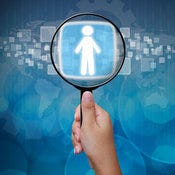Future Power Grids Will Need Big Data Analysis
For the world's next-generation electrical networks, analysis and standardization will be just as important as power inverters and switches.


Big Data Talent War: 7 Ways To Win
Big Data Talent War: 7 Ways To Win (click image for larger view and for slideshow)
For more than a century, electrical power the world over has relied on the same, tested, hub-and-spoke architecture: A centralized power plant for production, a distribution grid and, finally, passive consumers.
But that architecture is changing.
For one thing, alternative energy solutions such as wind and solar dramatically increase the points of production, sometimes pushing it all the way to the consumer's rooftop. For another, these forms of power generation are variable, making their measurement and management much more complicated.
Meanwhile, the electrical grid is gaining intelligence. So-called smart grid initiatives not only seek to better handle demand spikes and more efficiently use electrical power, they assume a bidirectional world in which electricity can flow back onto the grid, if a local subnetwork generates more power than it consumes.
[ Read Big Data Meets Texas Smart Energy Grid. ]
To make all this work requires modeling, forecasting and simulation software, as well as enterprise systems that can handle large amounts of real-time data.
"IT will become the critical supporting backbone for distributed generation, both in developed and developing countries," Nagendra Cherukupalli, the chief technology officer of global solar energy company SunEdison, told InformationWeek. "To my mind, IT is fundamental and foundational in any kind of distributed [energy] regime."
SunEdison manages 900 solar energy installations around the globe. Its three control centers are based in Chennai, India; Madrid, Spain; and Belmont, Calif. The IP-enabled equipment in the field communicates status and performance, sending this data across the Internet to the centers, which can optimize the gear remotely or send out a technician to fix a problem.
An ongoing problem, said Cherukupalli, is the lack of industry-standard protocols, which requires companies like SunEdison to develop core enterprise systems to translate and normalize the data coming from all the systems, whether these are solar panels, wind farms or batteries.
"There are initiatives going on to standardize these protocols," he said, adding this would free companies like his from low-level work and let them focus on interpreting the data and making it useful to consumers and others. In the U.S., one center for this work is the Department of Energy's Office of Electricity Delivery and Energy Reliability (OE). Among the office's four priorities, listed on its Web page, is the pursuit of smart grid research and development to "adapt and integrate the use of advanced digital technology to modernize the nation's electric delivery network for enhanced operational intelligence and connectivity."
Along with monitoring electrical production and consumption, SunEdison monitors environmental factors such as sun intensity, temperature, cloud cover and wind velocity in order to maximize the output of its systems in the field. Indeed, the volume of data created in distributed energy networks is substantial, leading companies like SunEdison into big data modeling and analytics.
In its white paper "Managing big data for smart grids and smart meters," IBM succinctly outlines the data-volume problem this way: "Going from one meter reading a month to smart meter readings every 15 minutes works out to 96 million reads per day for every million meters. The result is a 3,000-fold increase in data that can be overwhelming if not properly managed."
But IBM goes on to address the potential upside of all this new data, which it says will not only make the electrical grid more efficient but enable new services and products for customers. Using predictive analytics on their data, IBM writes, utility companies can make a wide range of forecasts, such as:
-- How much excess energy will be available, when to sell it and whether the grid can transmit it.
-- When and where equipment downtime and power failures are most likely to occur.
-- Which customers are most likely to feed energy back to the grid, and under what circumstances.
-- Which customers are most likely to respond to energy conservation and demand reduction incentives.
-- How to manage the commitment of larger, traditional plants in a scenario where peaks from distributed generation are becoming relevant.
Modeling, forecasting and simulation know-how is where much of energy-optimization company Stem's intellectual property resides, company founder and CEO Salim Kahn told InformationWeek recently. Stem's turnkey system, which analyzes large amounts of data, including historical weather information and industry usage patterns, uses predictive algorithms to help companies determine the best times to pull power from the grid.
Big data sets are also a fact of life at 3Tier, which provides renewable energy risk analysis, assessment and forecasting for alternative energy projects in wind, solar and hydro. Among other things, the company looks at 40 years of global climate data in its model.
"The data really piles up," IT director Paul English says in a video for EMC Corp. The company's supercomputer cluster outputs about a terabyte of data per day, which are held in EMC storage systems.
Bringing "Victorian-esque" electrical systems into the computer age is a mission of Glynne Townsend, CEO at Spider9, which manufacturers advanced control systems for energy storage and solar fields.
A field with thousands of solar panels, batteries and inverters -- all constantly changing in response to environmental conditions -- is dramatically more complicated and produces one thousand times more data than a traditional electrical network, Townsend said in a phone interview.
Join Cloud Connect for a free webcast with "Cloudonomics" author Joe Weinman. Cloudonomics is a new way to discuss the benefits of private clouds. Many have focused on the cost reduction possibilities while others have focused on business agility. However, private clouds can play a strategic role, as well. The Cloudonomics webcast happens Dec. 12. (Free registration required.)
Read more about:
2012About the Author(s)
You May Also Like
How to Amplify DevOps with DevSecOps
May 22, 2024Generative AI: Use Cases and Risks in 2024
May 29, 2024Smart Service Management
June 4, 2024







